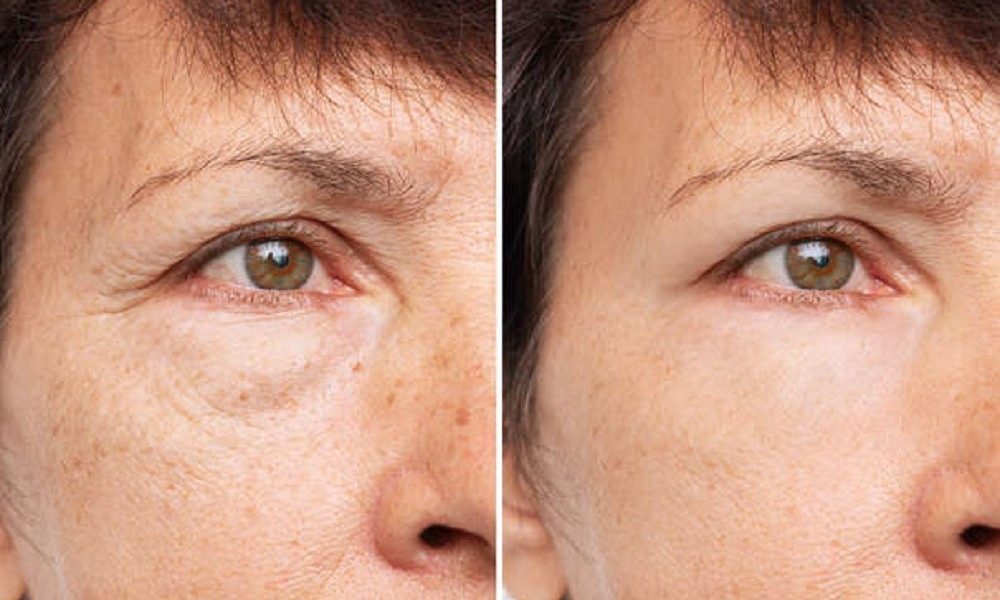
The Ultimate Guide on How to Reduce Eye Bags and Look Refreshed

Bags under eyes are a common frustration, creating a tired, stressed look that can be hard to shake. Whether they result from lack of sleep, genetics, or fluid retention, these puffy shadows often feel unavoidable. However, the good news is that there are effective solutions to reduce eye bags and achieve a refreshed youthful appearance. This comprehensive guide will explore ways on how to reduce eye bags effectively.
Common Causes of Bags Under Eyes
Bags under the eyes usually form due to aging, fluid retention, allergies, or lack of sleep. As we age, the tissues around the eyes weaken, causing the skin to sag and fat to shift into the lower eyelids. Fluid retention can also contribute to puffiness, especially after salty meals or during hormonal changes. Identifying these triggers can help determine the most effective methods for reducing bags under the eyes.
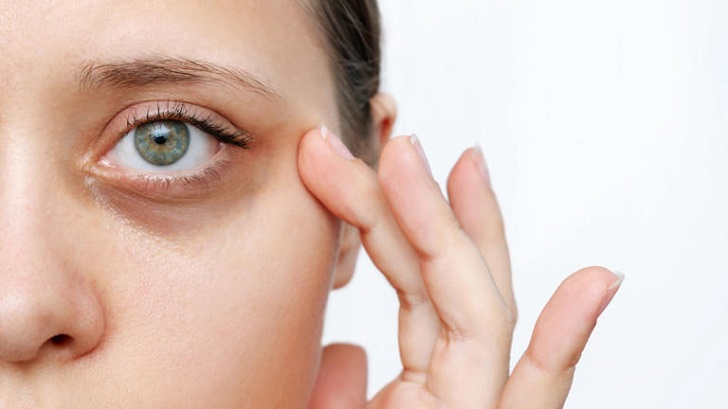
Daily Wrap | MSN | Bags under the eyes usually form due to aging, fluid retention, allergies, or lack of sleep.
How to Reduce Eye Bags in 6 Ways
1. Lifestyle Adjustments to Minimize Puffiness
Lifestyle habits play a significant role in managing bags under the eyes. Getting enough sleep, typically seven to nine hours per night, is crucial for skin health. Sleeping with your head slightly elevated also prevents fluid buildup around the eyes. Cutting back on salt and staying hydrated can minimize fluid retention, which directly impacts the puffiness under the eyes. Additionally, avoiding smoking can greatly benefit skin elasticity, reducing the severity of bags.
2. Simple Home Remedies for Eye Bags
Many home remedies offer quick relief from puffiness. A cool compress is a simple way to reduce swelling under the eyes. Gently apply a damp, cool washcloth for a few minutes to help tighten the skin. Tea bags—specifically caffeinated black or green tea—contain antioxidants and tannins that can help tighten skin and reduce inflammation when used as a cool compress. These natural solutions are often safe and effective for mild cases of puffiness.
3. Skincare and Cosmetic Solutions
Skincare products designed for under-eye treatment can make a visible difference. Look for creams with ingredients like caffeine, hyaluronic acid, or peptides, as these can help tighten the skin and improve hydration. Additionally, makeup can temporarily conceal bags under the eyes. A good-quality concealer that matches your skin tone can mask the darker areas under the eyes, creating a more even and refreshed appearance.
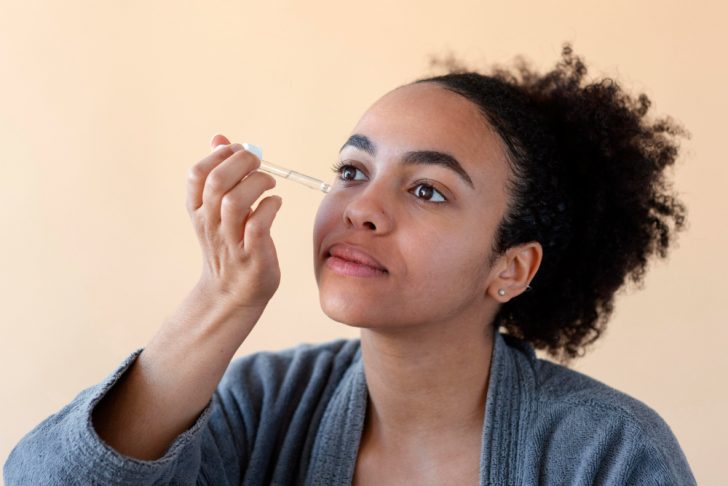
Freepik | Skincare products designed for under-eye treatment can help tighten the skin and improve hydration.
4. Medical Treatments for Bags Under Eyes
When home remedies and lifestyle changes aren’t enough, medical treatments offer longer-lasting results. Wrinkle treatments, such as laser resurfacing and chemical peels, can improve the skin’s tone and texture, helping to reduce puffiness. Fillers may also be an option to plump the under-eye area, balancing out hollows that contribute to the appearance of bags. It’s essential to consult a healthcare provider to determine which treatments may work best for your skin type, especially if you have a darker complexion, as certain procedures can cause pigmentation changes.
5. Eyelid Surgery for Long-Lasting Results
If you are seeking a more permanent solution, eyelid surgery or blepharoplasty can effectively address bags under the eyes. This surgical procedure removes or repositions excess fat and tightens loose skin, restoring a smoother, more youthful look. Blepharoplasty is typically performed on an outpatient basis, with minimal downtime required. Discuss potential risks, such as bruising, swelling, or dry eyes, with a qualified surgeon to ensure this option aligns with your needs and expectations.
6. Reducing Allergic Reactions That Cause Puffiness
Allergies are a common cause of bags under the eyes. Seasonal allergies and sensitivities to cosmetics, hair dyes, or soaps can cause eye swelling. Over-the-counter allergy medications can help, but if symptoms persist, speak with a healthcare provider for stronger options. Taking preventative steps, such as identifying and avoiding allergens, can make a significant difference in reducing inflammation and puffiness.
When to Seek Professional Advice
If lifestyle adjustments and over-the-counter remedies don’t seem effective, consult a healthcare provider. Persistent puffiness might indicate an underlying health issue, such as thyroid problems or kidney conditions, that may require medical treatment. A professional assessment can help determine the root cause of the puffiness and provide more tailored treatment recommendations for lasting results.
More in Treatment
-
`
A Quick Guide on How to Get Short-Term Disability Approved for Anxiety and Depression
Living with anxiety or depression poses unique challenges, particularly in the workplace, where stress can exacerbate symptoms. For many, short-term disability...
July 5, 2024 -
`
Why Do People Feel Sleepy After Eating?
Is feeling sleepy after eating a sign of diabetes? Well, not directly. There are many reasons why you feel drowsy after...
June 20, 2024 -
`
What Is High-Functioning Depression? Symptoms and Treatment
High-functioning depression may not be a term you hear every day, but it’s a very real and challenging experience for many....
June 13, 2024 -
`
Kelly Clarkson’s Weight Loss Ozempic Journey – Debunking the Rumors
In a refreshing moment of transparency, Kelly Clarkson, the beloved singer and talk show host, sheds light on her remarkable weight...
June 3, 2024 -
`
What Is the Best Milk for Gut Health and Why?
In recent years, the milk section at the grocery store has expanded far beyond the traditional options. While cow’s milk has...
May 30, 2024 -
`
Do Dental Implants Hurt? Here’s All You Need to Know
When you hear “dental implants,” you might wince at the thought of pain. But do dental implants hurt as much as...
May 24, 2024 -
`
5 Key Differences Between A Psych Ward & A Mental Hospital
Curious about the differences between a psych ward and a mental hospital? You are not alone. With the mental health conversation...
May 16, 2024 -
`
It’s Official! “Selling Sunset’s” Christine Quinn & Husband Christian Dumontet Are Parting Ways
Have you ever found yourself unexpectedly engrossed in the personal lives of celebrities, especially when their stories take dramatic turns? Well,...
May 9, 2024 -
`
What is Premarital Counseling and Why Consider It?
Congratulations! You’ve set a date, picked out your dream dress, and booked the perfect venue. But amidst the whirlwind of wedding...
April 30, 2024





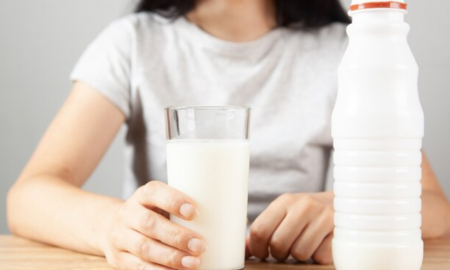
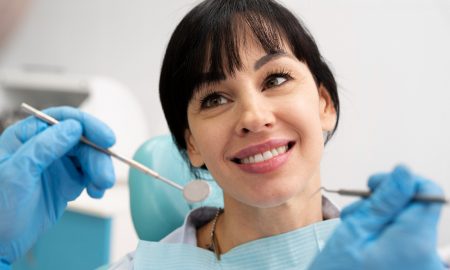



You must be logged in to post a comment Login